The fourth edition of TechXplore showcases game-changing science & tech innovations and solutions developed by HTX for the Home Team.
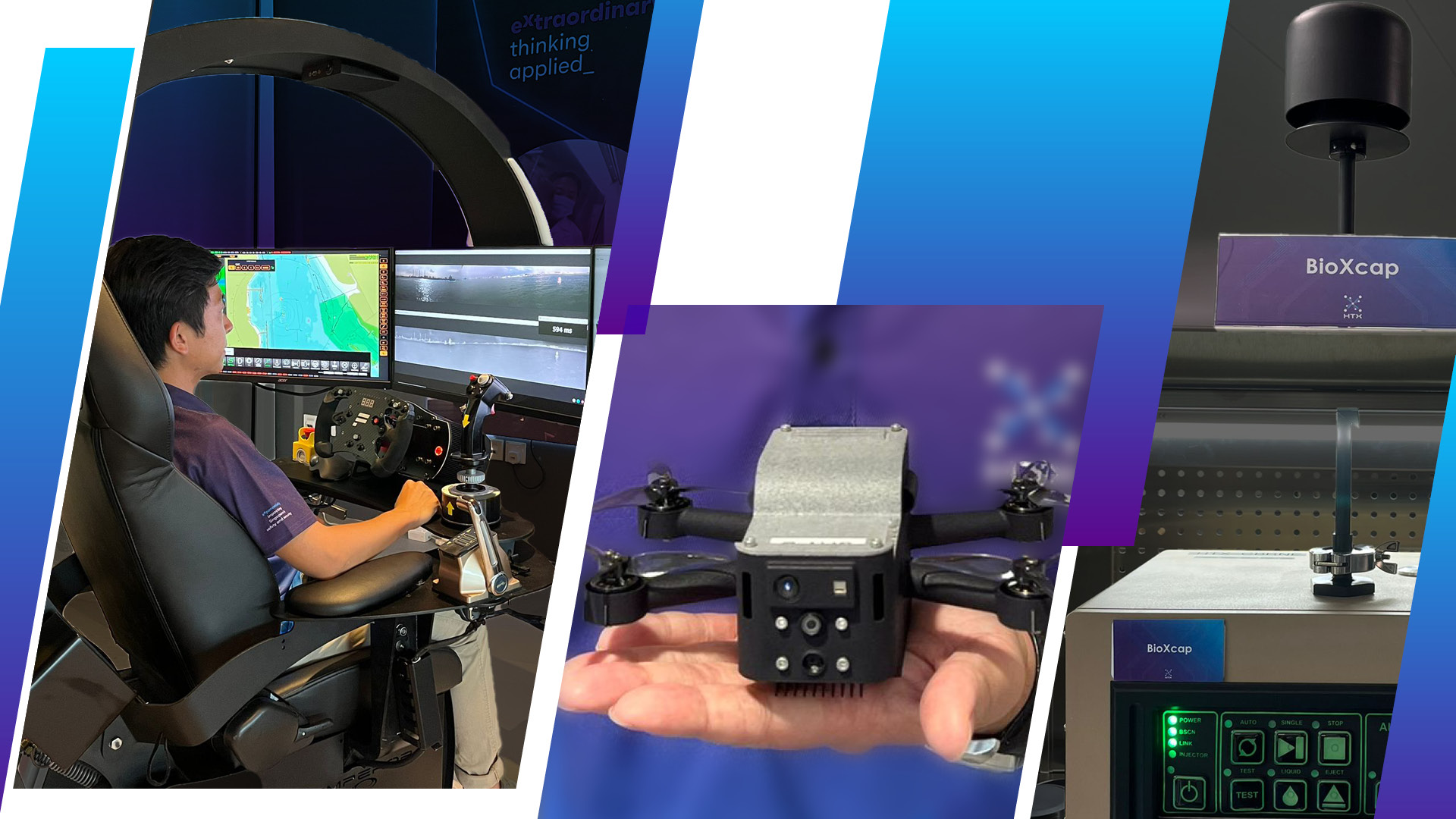
(From left to right) Edwin Wu, Lead Engineer (Maritime Systems), Robotics, Automation & Unmanned Systems Centre of Expertise remotely operating a Firefighting Unmanned Surface Vessel using the Ground Control Station; Close-up of a palm-sized indoor drone; and BioXcap, a bioaerosol threats detector. (Photos: HTX/ Michelle Lim)
An unmanned surface vessel to aid in maritime firefighting operations, a bioaerosol threats detector that can identify biological threats 24/7, and a palm-sized drone that can operate Beyond Visual Line of Sight (BVLOS) – these were some of the innovative science and tech solutions showcased at HTX's TechXplore 4 exhibition this week.
TechXplore, a biannual event, showcases HTX’s latest capabilities that play a critical role in keeping Singapore safe and secure. Over 600 people from the Home Team, government, and industry attended TechXplore 4 held at HTX headquarters from November 28 to 29. The event coincided with HTX’s third anniversary celebrations.
Read related article: HTX Turns Three
Experimentation driving innovation
The fourth edition of TechXplore showcased an array of more than 20 science & tech solutions covering blockchain, biometrics, cloud technology, cybersecurity, data analytics, drone technology, forensics, robotics, and more.
Unmanned systems to support the Home Team – from sea to air
Engineers from HTX’s Robotics, Automation & Unmanned Systems Centre of Expertise (RAUS CoE) showcased a Firefighting Unmanned Surface Vessel (FiFi USV), which is being developed to augment Singapore Civil Defence Force’s (SCDF) maritime firefighting and emergency response capabilities. FiFi USV can autonomously detect hotspots and display them via real-time video feeds at the Ground Control Station (GCS). The USV can be remotely piloted and perform unmanned firefighting from a GCS, which can be located anywhere – on land and sea.
“The use of unmanned technologies will enhance the capabilities of SCDF Marine Division operations and help SCDF optimise manpower and more safely deploy its resources,” said Ho Choong Chuin, Deputy Director (Maritime Systems), RAUS CoE.
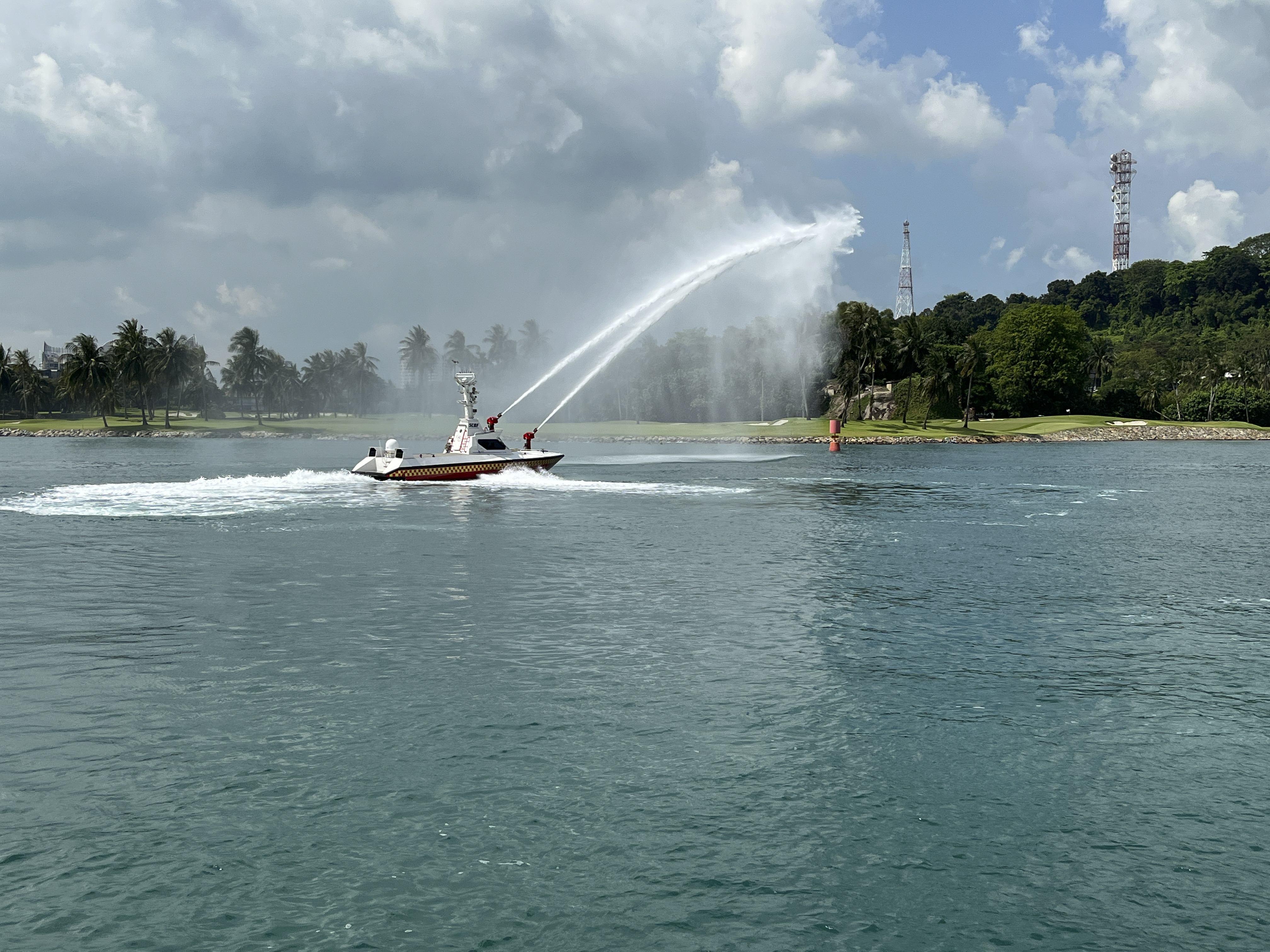
FiFi USV’s customised algorithm for Station-Keeping enables it to maintain its position and heading, while operating its two water cannons at full power during firefighting operations. (Photo: HTX)
Another exhibit, Project Aperture – an indoor BVLOS Unmanned Aerial Vehicle (UAV), or commonly known as drone – was developed in-house by RAUS engineers to address challenges faced in operating conventional UAVs indoors.
“There are unique tactical needs of the Home Team that require the use of a UAV indoors. But conventional UAVs are often too large for indoor use. They also have limited radio frequency transmission range indoors and have trouble maintaining stability and position without a Global Navigation Satellite System (GNSS),” said Low Hsien Meng, Lead Engineer (Aerial Systems), RAUS CoE.
The palm-sized UAV, which weighs just 255g, has forward-facing visual sensors that enable it to hold its position or maintain the right speed and trajectory. It relies on cellular datalink over VPN, which means it can operate no matter how far or deep the UAV traverses into the building.

Low Hsien Meng, Lead Engineer (Unmanned Aerial Systems), RAUS CoE, holding the palm-sized indoor BVLOS UAV. On the right is a close-up of the UAV. (Photos: HTX/ Michelle Lim)
Read related article: HTX's First Long-Distance BVLOS flights a milestone for Home Team Ops
Safeguarding Singapore against CBRNE threats
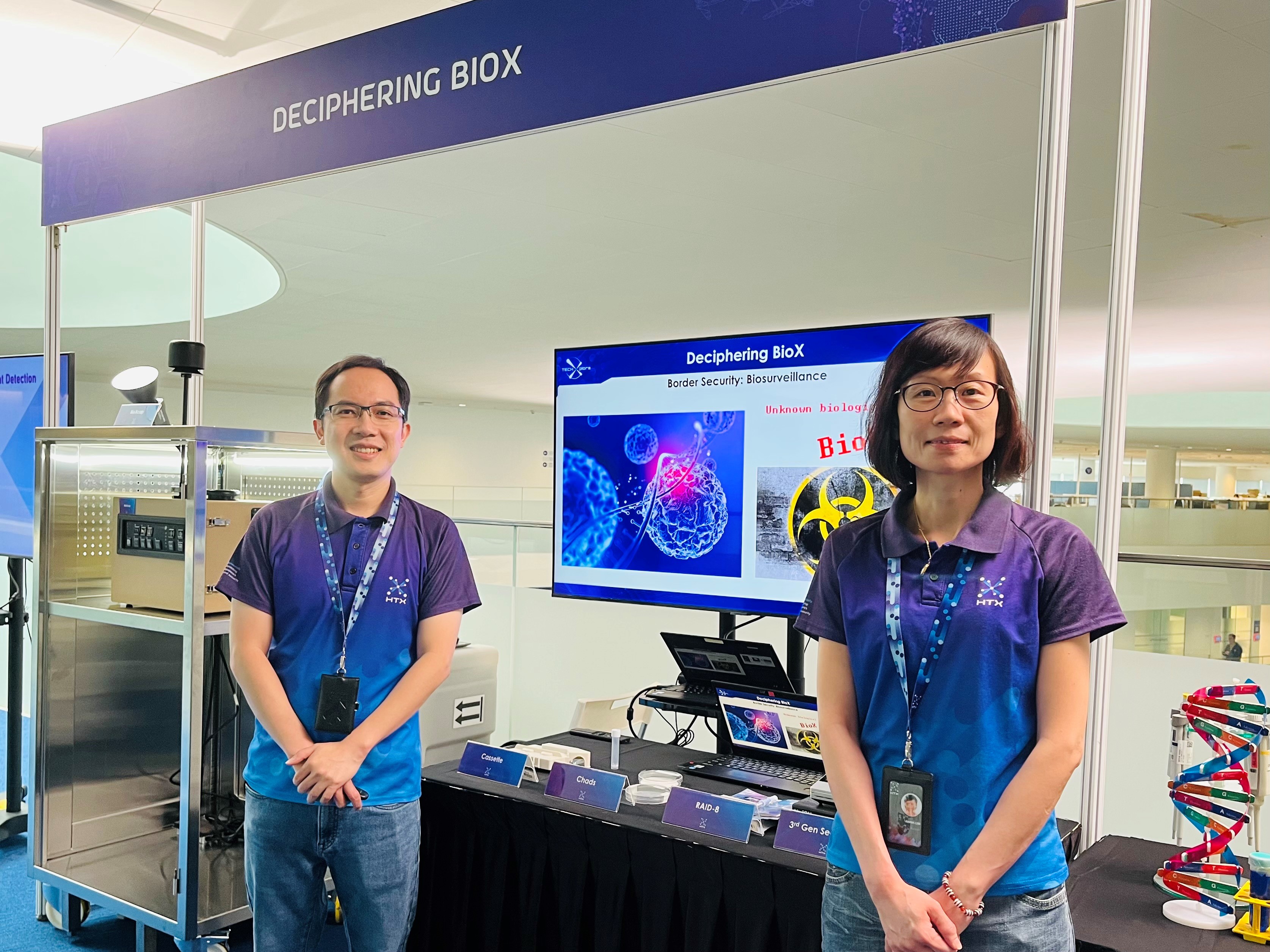
(From left to right) Dr. Kenneth Chung, Senior CBRNE Scientist, and Anna Lim, Deputy Director (CBRNE Research), with BioXcap (extreme left), which captures airborne particles, analyses them in near real-time for the presence of bioterrorism agents. (Photo: HTX/ Michelle Lim)
TechXplore 4 also showcased the work of HTX scientists who are advancing science & tech and developing new capabilities that will safeguard Singapore against bioterrorism and biological threats of concern.
An example is the Bioaerosol Threats Detector – or BioXcap – a first-of-its-kind detector that monitors, identifies, and provides early warning of the presence of potential bioaerosol threats in the environment. “BioXcap is a game-changer in how we will do biosurveillance,” said Anna Lim, Deputy Director (CBRNE Research), Chemical, Biological, Radiological, Nuclear & Explosives Centre of Expertise (CBRNE CoE).
“We add value to the Home Team by identifying the best technologies for operational deployment and work closely with industrial partners to sharpen the Home Team’s capabilities,” Anna added. “In terms of unknown genetic sequences, we are able to upload these new genetic sequences into the global genome database for the entire scientific community.”
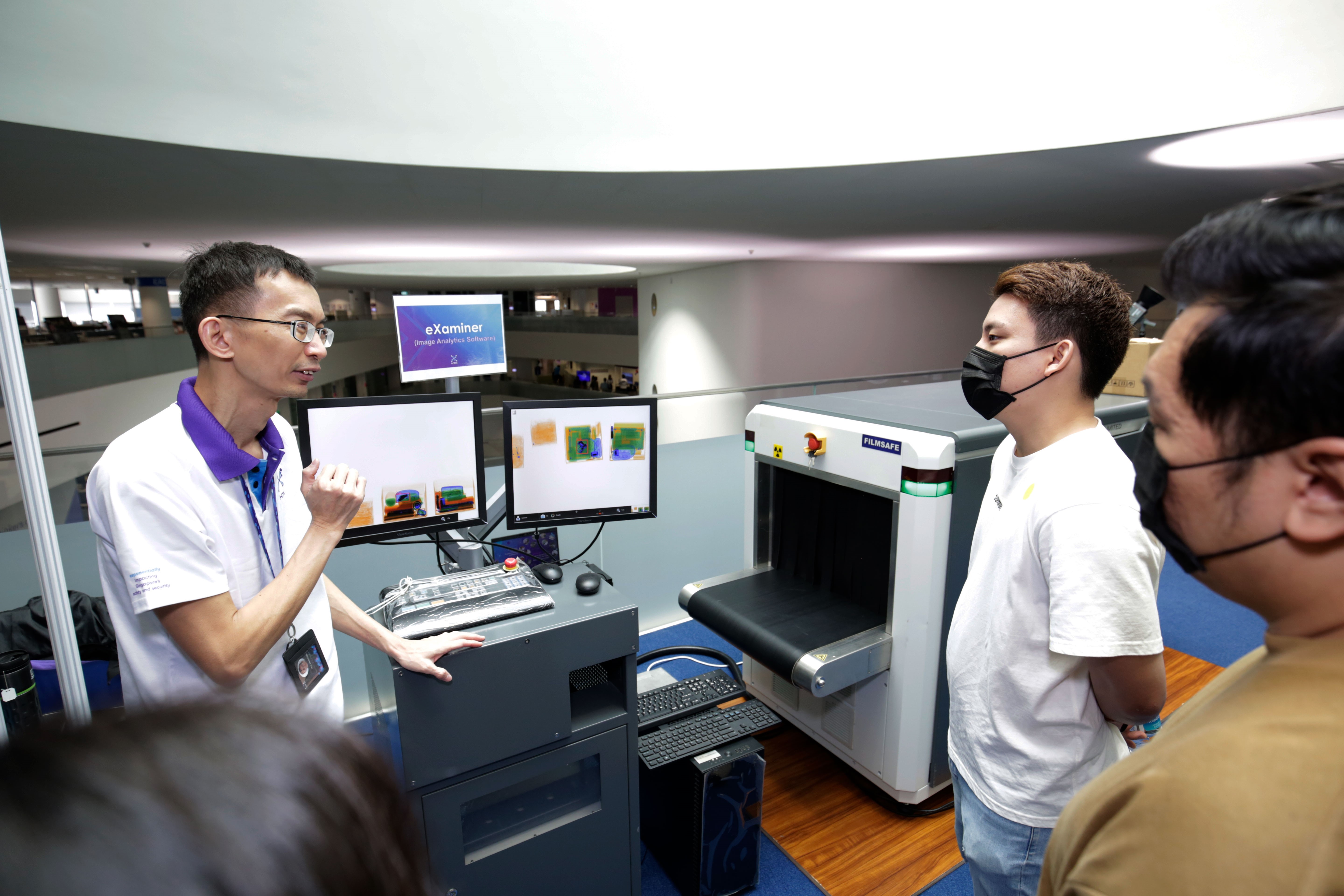
Dr. Teo Soo Kng (extreme left), Senior Data Scientist, CBRNE CoE, explaining to TechXplore attendees how eXaminer identifies threats of interest based on X-ray images. Behind him is the display from eXaminer, which highlights suspicious items being screened. (Photo: HTX)
Another CBRNE project – eXaminer – uses artificial intelligence (AI) to automate the detection of anomalies in baggage and parcels on X-ray images.
“eXaminer is a tool to enable image analysts to make more accurate assessments. It has the potential to enhance screening capabilities such as achieving a full automated cargo clearance process at our borders,” said Dr. Goh Ho Wee, Deputy Director (CBRNE Scanning Technology & Analytics).
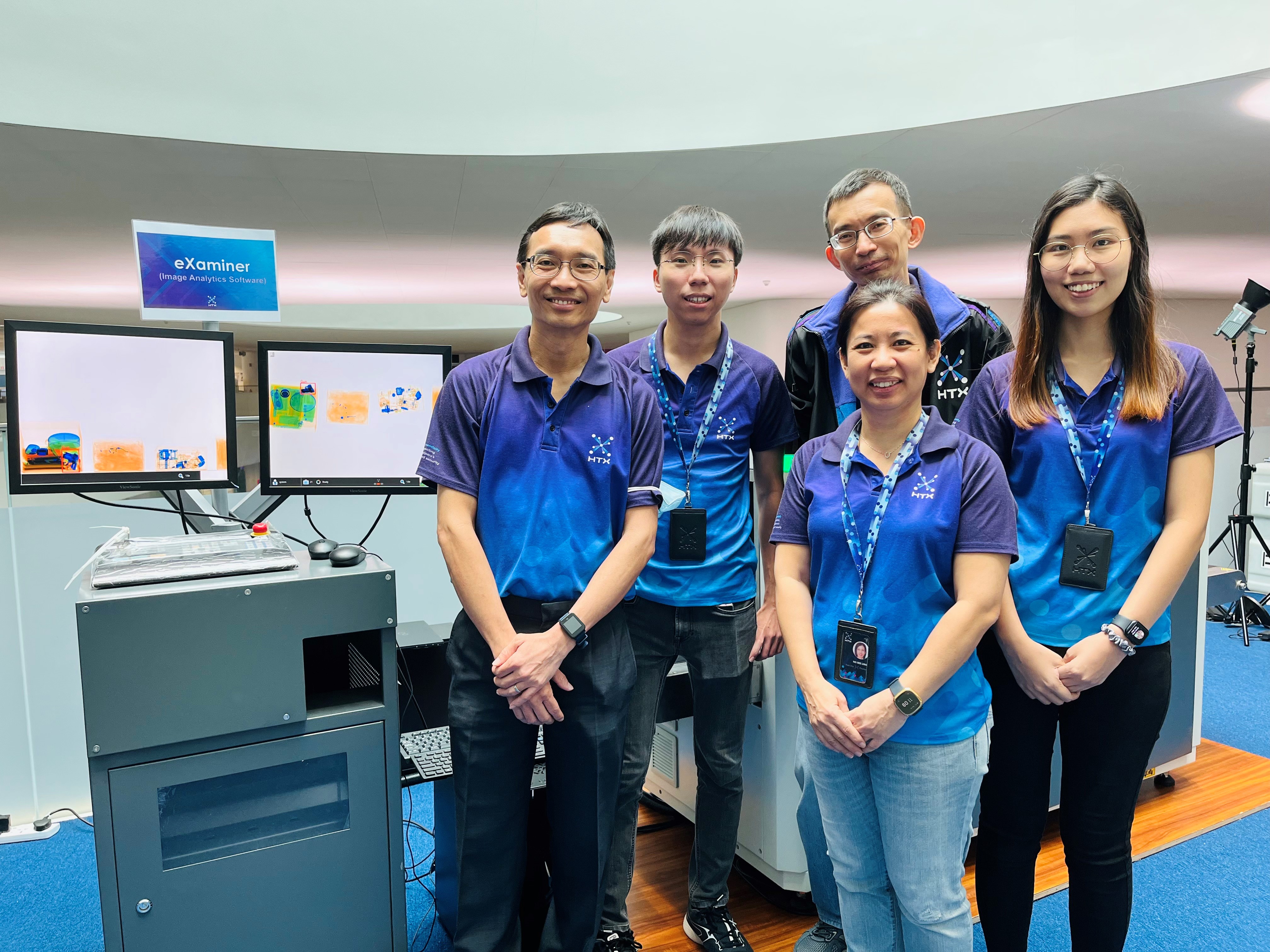
Dr. Goh Ho Wee, Deputy Director (CBRNE Scanning Technology & Analytics), CBRNE CoE (extreme left) and his team with eXaminer, a universal AI toolkit to screen parcels and baggage. (Photo: HTX/ Michelle Lim)
Sharing expertise, strengthening collaboration
In addition to the exhibition, TechXplore 4 featured a series of talks held in-person and virtually covering a range of topics including “New tech, new mindset to solve crimes” by Forensics CoE, “Is it human weakness to fall for phishing attack?” by Cybersecurity CoE, and “Marine video analytics for man-in-water detection and sonar object detection” by Sense-making & Surveillance CoE.

Yang Chiew Yung, Senior Principal Forensic Scientist, Forensics CoE, sharing with TechXplore 4 attendees on how Forensics CoE integrates different scientific disciplines and harnesses science to assist Home Team Departments in providing investigative leads to solve crimes. (Photo: HTX)
TechXplore attendees also had the opportunity to hear from domain experts such as Prof Werner Riedel, Chief Scientist of the Division for Defense Science and Technology at Fraunhofer Ernst-Mach-Institute, who spoke on “Engineering resilience against natural and man-made disasters.”

Prof Werner Riedel, Chief Scientist of the Division for Defense Science and Technology at Fraunhofer Ernst-Mach-Institute, speaking at TechXplore 4 on Nov. 29, 2022. (Photo: HTX)
Carmel Gordon, innovation analyst at SOSA HLS, an innovation hub, and Francesco Cavalli, chief operating officer at Sensity AI, discussed trends in deepfakes – digital impersonation, often using AI to generate or manipulate visual images or audio – the threats they pose, and countermeasures that can be taken.
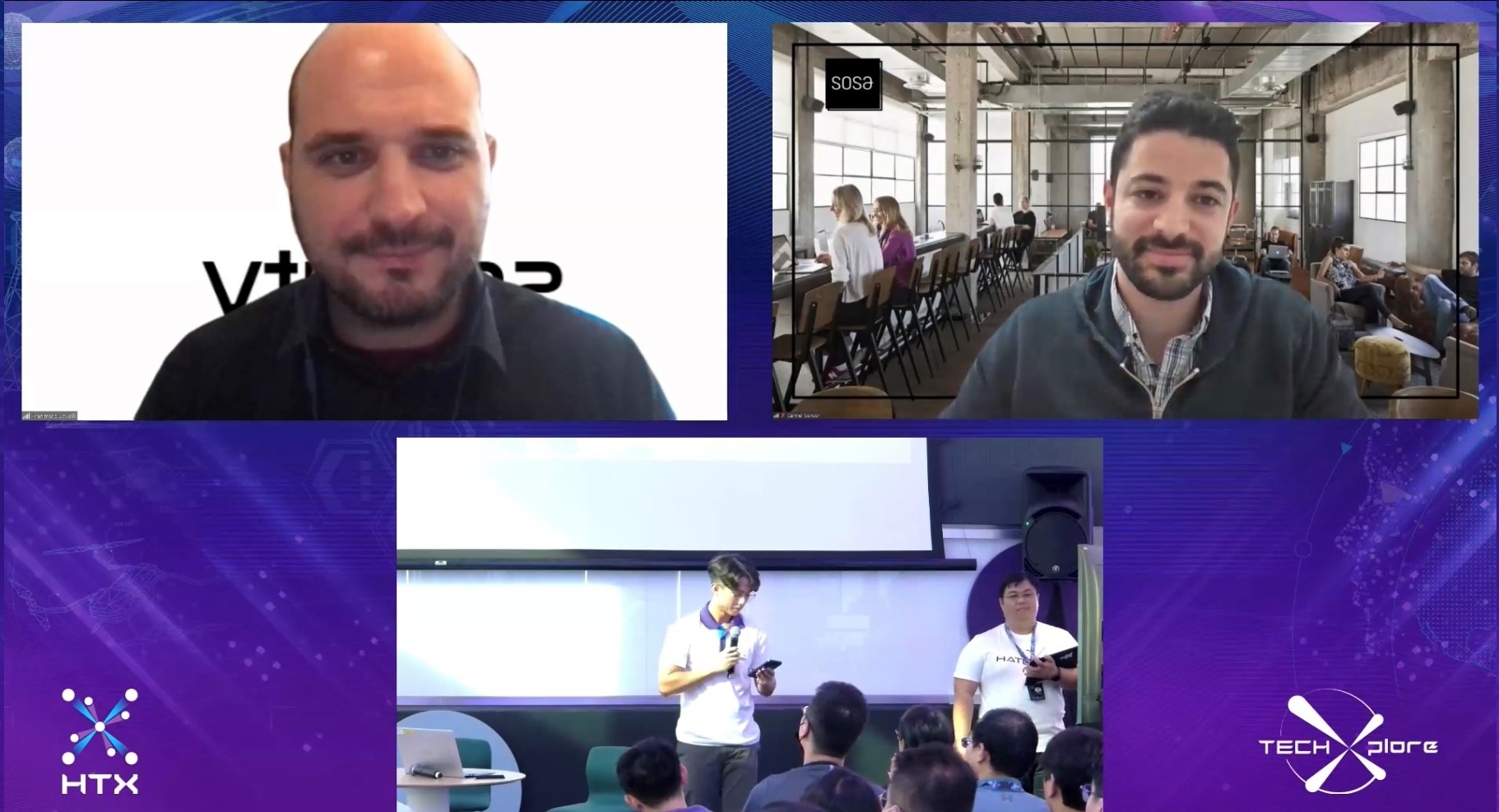
(Top left to right) Screenshot of Sensity AI chief operating officer Francesco Cavalli and SOSA HLS innovation analyst Carmel Gordon speaking at a session titled “What is real anymore? Deepfake threat and trends.” (Photo: HTX/ Michelle Lim)
What some attendees had to say about TechXplore 4
A/Prof Joanne Chan, Centre Director of the National Centre for Food Science at the Singapore Food Agency, said it was exciting to see the application of robotics such as drones, and science & tech to support operations.
“TechXplore has come a long way,” said MAJ Fung Ka Kin, Commander of the Paya Lebar Fire Station, SCDF, who visited TechXplore 4 with a group of colleagues from the Ministry of Home Affairs and other Home Team Departments.
“You can really see that HTX, [with] the projects you are doing, is embedded with the Home Team Departments’ core operations and supporting us in pushing the innovation frontier,” he added.

